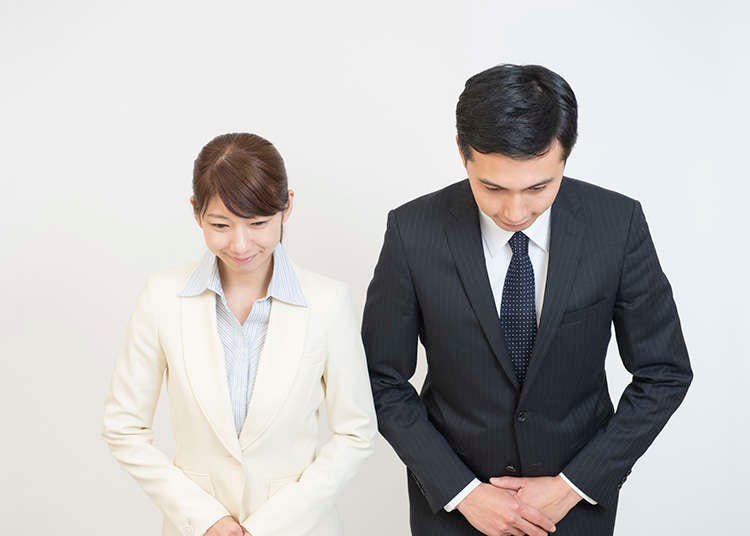Japanese Body Language You Need to Know
Japanese body language is fascinating and can reveal a lot about Japanese culture. So, let’s dive into the world of nonverbal communication in Japan and uncover the secrets behind those subtle gestures and expressions.
In Japan, body language is considered just as important as verbal communication. From a bow to a simple nod, these nonverbal cues convey respect, politeness, and social hierarchy. Understanding Japanese body language can help you navigate social interactions and show respect to the people you encounter.
Whether you’re planning a trip to Japan or simply curious about different cultures, exploring the nuances of Japanese body language will open up a world of understanding and appreciation. So, let’s decode the unspoken language of Japan together!
Discover the fascinating world of nonverbal communication in Japan. From subtle gestures to facial expressions, Japanese body language conveys deep meanings. Dive into the rich cultural nuances and gain insights into the unspoken language of the Japanese people. Uncover the secrets behind bowing, hand gestures, and eye contact. Explore the art of reading body language in Japan and enhance your understanding of this unique culture.

The Intricacies of Japanese Body Language: Understanding Cultural Cues
Japanese body language is a fascinating aspect of Japanese culture that holds great significance in communication. Understanding and interpreting these nonverbal cues can greatly enhance cross-cultural interactions and avoid misunderstandings. From subtle facial expressions to nuanced hand gestures, Japanese body language tells a story of its own. In this article, we will delve into the intricacies of Japanese body language, exploring its key elements and the cultural context in which it thrives.
The Art of Bowing: A Gesture of Respect and Etiquette
The act of bowing is deeply ingrained in Japanese culture and serves as a fundamental gesture of respect and politeness. Bowing is not merely a head nod but a whole-body movement that varies in intensity and duration, depending on the situation and the level of respect being conveyed. A slight bow with a 15-degree angle is commonly used in casual settings, while a deeper bow with a 30-degree or 45-degree angle is reserved for formal occasions or when showing utmost respect to higher-ranking individuals. Keeping your hands to your sides or in front conveys humility and respect, while crossed arms or hands on hips may be seen as disrespectful or confrontational.
Communication through bowing extends beyond traditional greetings. It can also be used to show gratitude, apology, or acknowledgment. For instance, a shallow bow with slight hand movements can convey appreciation or thanks, while a deeper and longer bow combined with apologies signifies sincere remorse. Understanding the nuances of bowing in different contexts allows for seamless integration into Japanese society and fosters positive interpersonal relationships.
Eye Contact: The Unspoken Language of Respect and Hierarchy
In Western cultures, eye contact is often associated with honesty and attentiveness. However, in Japan, the rules of eye contact differ. Direct eye contact, particularly with someone of higher status or authority, is not as prevalent in Japanese culture. Maintaining constant intense eye contact may be deemed disrespectful, confrontational, or invasion of personal space. Instead, individuals tend to maintain a balance between occasional eye contact and averting their gaze to show respect and humility.
The level of eye contact also varies depending on the relationship between individuals. With acquaintances, minimal eye contact is common, while with close friends or family members, sustained eye contact may be more regular. Understanding these subtle differences in eye contact patterns allows for better communication while respecting the cultural norms and expectations.
Unspoken Gestures: Silence Speaks Volumes
In Japan, silence is highly valued and often speaks louder than words. The emphasis on nonverbal cues extends to gestures and body language as well. For example, the “hushing” gesture, where one places a finger against their lips, is a widely understood symbol of secrecy, confidentiality, or the need for quietude.
Another important aspect of Japanese body language is the use of hand movements. Hand gestures are often subtle and understated, with minimal emphasis on large gestures. Hand movement, when used, is typically graceful and intentional, such as covering one’s mouth while laughing or softly cupping hands together while bowing in prayer or gratitude. It is essential to be mindful of these nuanced gestures to effectively navigate social situations in Japan and avoid any unintentional offense or miscommunication.
Personal Space and Touch: Balancing Respect and Connection
Japanese culture places great importance on personal space and respect for boundaries. Physical touch is generally less common in everyday interactions and is reserved for closer relationships. Hugging, kissing, or extensive physical contact in public is uncommon and may be perceived as intrusive or inappropriate.
Maintaining an appropriate distance during conversations is key to respecting personal space. In general, the Japanese tend to stand or sit at a comfortable distance from each other to maintain privacy and prevent discomfort. Being aware of personal space boundaries allows for smoother interactions and demonstrates cultural sensitivity.
Facial Expressions: The Language of Emotions
Facial expressions play a significant role in Japanese body language, conveying a wide range of emotions and intentions. While many facial expressions are universal, there are subtle differences in their interpretation and intensity.
Maintaining a neutral facial expression is often preferred in formal or public settings, as it reflects a sense of discipline and self-control. However, smiles are generally perceived as positive and are commonly used to express friendliness, gratitude, or agreement. It is important to note that the Japanese smile can vary in intensity, from a simple polite smile to a genuine and warm expression of happiness.
Understanding and interpreting Japanese facial expressions enables better comprehension of emotions and intentions, fostering effective communication and building stronger connections.
Posture and Body Movements: Conveying Status and Respecting Hierarchies
Posture and body movements hold significant cultural weight in Japan. Maintaining upright posture and avoiding slouching or resting one’s feet on furniture is seen as a sign of respect and proper etiquette. Leaning forward slightly when engaged in conversation demonstrates attentiveness and interest.
Japanese body language also reflects the hierarchical structure deeply ingrained in society. When interacting with someone of higher status or authority, individuals tend to be more reserved and deferential, taking up less space and minimizing movements. Conversely, individuals may exhibit more relaxed and casual body language when interacting with peers or subordinates. Being aware of these subtle physical cues helps navigate social dynamics and conveys respect for traditions and hierarchies in Japanese culture.
The Influence of Japanese Body Language on Everyday Interactions
Japanese body language has a profound impact on everyday interactions in Japan, from greetings and conversations to business meetings and social gatherings. By understanding and respecting these nonverbal cues, individuals can navigate the complexities of Japanese culture, forge meaningful connections, and avoid potential misunderstandings.
Japanese Body Language in Different Contexts
In Business and Professional Settings: Etiquette and Hierarchy
In the business world, Japanese body language plays a crucial role in establishing credibility and maintaining harmonious relationships. Bowing is particularly significant in business settings, as it reflects respect for seniority and hierarchies. When meeting a business associate or client, a deeper and more pronounced bow is appropriate to convey respect and professionalism.
Similarly, maintaining proper eye contact, presenting a calm and composed facial expression, and being mindful of space and gestures contribute to a positive professional image. Nonverbal cues, when aligned with the expectations of the Japanese business culture, can strengthen business partnerships and demonstrate cultural understanding.
In Social Gatherings: Harmony and Group Dynamics
Japanese body language also influences social gatherings and group dynamics. Understanding the unspoken rules and cues helps individuals integrate seamlessly and find their place within the group. Nonverbal cues like bowing, maintaining appropriate distance, and exhibiting respectful body language are essential to creating a harmonious social environment.
Additionally, observing and mirroring the behavior of others can help establish connections and foster a sense of camaraderie. Paying attention to the group’s dynamics, being aware of personal space, and respecting hierarchical structures cultivates a sense of belonging and positive social interactions.
In Everyday Conversations: Mutual Understanding and Respect
Japanese body language plays a significant role in everyday conversations, facilitating mutual understanding and effective communication. Subtle shifts in posture, facial expressions, and hand movements can convey agreement, disagreement, or confusion. Practicing active listening and being attentive to nonverbal cues ensures that conversations flow smoothly and intentions are accurately grasped.
It is important to approach conversations with an open mind, respecting the cultural context and appreciating the significance of nonverbal cues. By doing so, individuals can create meaningful connections and foster genuine empathy and understanding.
In conclusion, Japanese body language is a rich and intricate form of communication that permeates every aspect of daily life in Japan. From the respectful art of bowing to the subtle nuances of eye contact and hand movements, these nonverbal cues reflect Japanese culture, traditions, and values. By immersing ourselves in the study of Japanese body language and respecting its nuances, we can bridge cultural gaps, foster meaningful connections, and truly embrace the spirit of cross-cultural communication. Let us embrace the beauty of nonverbal communication and embark on a journey of cultural understanding.
Key Takeaways – Japanese Body Language
- Japanese people bow as a sign of respect and greeting.
- Avoid pointing directly at people or objects, use an open hand instead.
- Eye contact is seen as a form of aggression, so it’s best to maintain averted gaze.
- Silence is valued in conversations, so don’t interrupt or talk over others.
- Japanese body language is subtle and nuanced, so pay attention to subtle gestures and facial expressions.
Frequently Asked Questions
Welcome to our FAQ section on Japanese body language! In this guide, we’ll explore various aspects of Japanese body language and provide you with insights into the cultural nuances that shape it. Whether you’re planning a trip to Japan or simply interested in learning about different cultures, understanding body language can help you better connect with people. Let’s dive into some common questions about Japanese body language!
1. How important is bowing in Japanese culture?
In Japanese culture, bowing is a significant form of nonverbal communication. It conveys respect, gratitude, and greetings. The depth and duration of a bow can vary depending on the situation and the people involved. For example, bowing to show respect to an elder or a higher-ranking person is common in formal settings or business interactions.
However, in casual situations among friends or peers, a slight nod of the head can be enough. It’s important to observe and learn from those around you to understand the appropriate level of bowing in different contexts.
2. What are some common hand gestures in Japan?
Hand gestures in Japan can have different meanings compared to other cultures. For instance, forming an “O” shape with your hand is a way to indicate something is okay or approved. However, be aware that pointing directly at someone with your finger is considered rude, so it’s best to avoid it.
Another common hand gesture is the “meishi chouzu,” which is a respectful way to present or receive business cards. Hold the card with both hands and present it with a slight bow. When receiving a card, accept it with both hands and take a moment to read it before putting it away.
3. How do Japanese people express agreement or disagreement nonverbally?
In Japanese culture, direct confrontation and disagreement are generally avoided. Instead, people may express agreement or disagreement through subtle nonverbal cues. Nodding while listening is often a sign of agreement, whereas silence and avoiding eye contact may indicate disagreement or reservation.
Additionally, Japanese people may use techniques such as “nemawashi,” which involves discussing a matter with relevant stakeholders before making a decision. This allows for consensus-building and avoids direct conflict.
4. Is maintaining eye contact important in Japanese body language?
While maintaining eye contact is generally seen as a sign of attentiveness and respect in Western cultures, it’s important to note that in Japanese culture, prolonged eye contact can be considered impolite or invasive. Japanese people often engage in indirect eye contact, focusing on the general facial area rather than directly into someone’s eyes.
It’s important to be aware of cultural differences and adapt your behavior accordingly when interacting with Japanese individuals. Remember, showing respect and understanding goes a long way in building positive relationships.
5. How do Japanese people express politeness through body language?
In Japanese culture, maintaining a sense of politeness is highly valued. One way this is expressed through body language is by keeping a modest and humble posture. Slouching or taking up too much space can be seen as disrespectful, so maintaining an upright and reserved posture is important.
Also, using polite speech and honorifics when addressing others, such as adding “san” after someone’s name, is another way to demonstrate respect. Being attentive and using proper greetings, such as bowing when appropriate, are additional ways to show politeness in Japanese body language.
Don’t go to Japan without knowing these 10 Japanese Gestures
Summary
Japanese body language is a fascinating cultural aspect that involves subtle gestures and actions. Understanding and respecting these non-verbal cues can help in effective communication with Japanese people. Bowing is a common greeting and showing appreciation, while avoiding direct eye contact signifies respect. Additionally, maintaining proper personal space and using appropriate hand gestures are essential in Japanese culture.
It is important to keep in mind that body language can vary between individuals and contexts. However, being aware of these general guidelines can help navigate cultural differences and foster positive interactions with Japanese people. So, next time you’re in Japan or interacting with Japanese individuals, pay attention to their body language – it can speak volumes!

